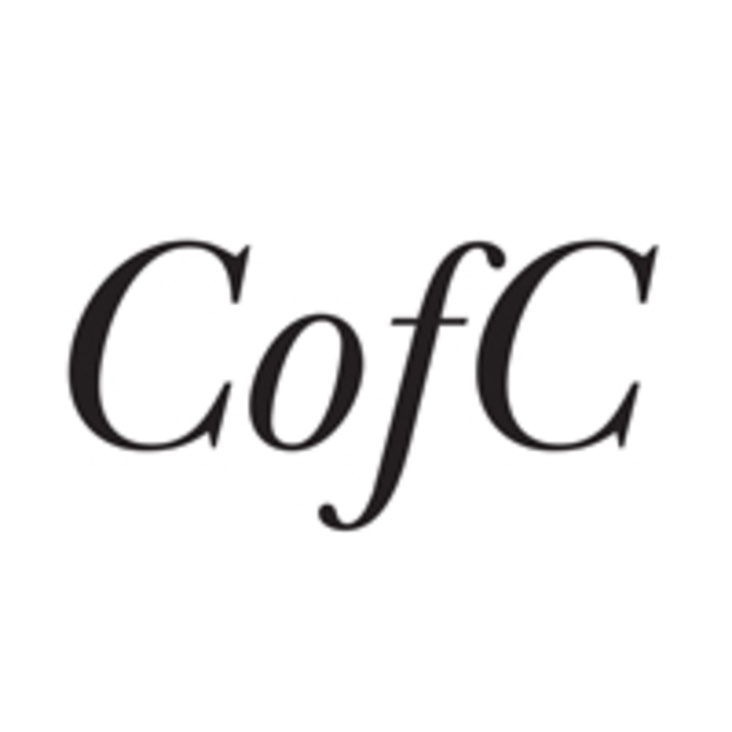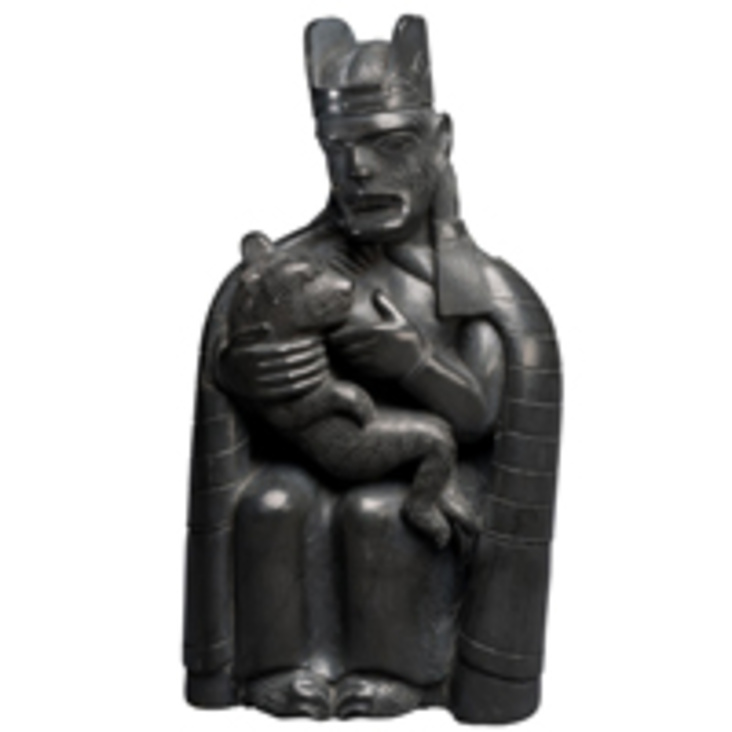
Unknown maker, Haida
Wood, paint, mica
Collected by Charles F. Newcombe in 1901
American Museum of Natural History 16/8802
This cedar box was carved, likely prior to 1880, as a burial chest for Gidaansda, holder of the Haida title Chief Skedans. He had received the rights to the mountain goat, a non-Haida crest, from a prominent Tsimshian trading partner. The painted Chilkat pattern enframing the goat’s head may also reference these relationships, as both robes and goat products (fur and horn) were common Haida imports from Tsimshian territory. Two bears adorn the box ends. The round face might represent a moon, another crest acquired from the Tsimshian; at the same time, its recurved beak (now broken) and extended feathered-wing-like motif imply a hawk, one of Gidaansda’s clan crests. When collected in 1901, Newcombe wrote that it was “considered by [his] survivors more suitable as a receptacle for blankets,” possibly because the intervening decades brought changes to Haida burial practices under the influence of Christian missionaries. Although its original function was never realized, the family kept the chest in use, suggesting its lasting status as a valued crest item as well as a sentimental heirloom of an earlier era.


Click here for a discussion about this object (Lyle Wilson)
Click here for a discussion about this object (Michael Nicoll Yahgulanaas)










